Fantasy Strike Fulfills Its Mission Despite Balance Issues
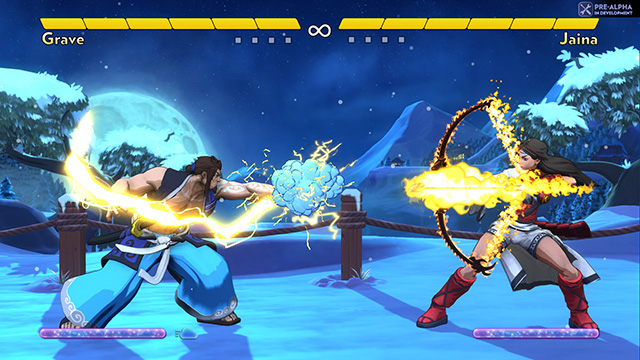
I have to admit I suck at fighting games. I’ve always admired the competitive spirit in the fighting game community, admiration born from inviting friends over, opening up a bottle of Wray and Nephew, and spending an entire evening dedicated to talking trash and beating each other up.
That being said, outside of living room arenas, the learning curve on fighting games such as Blazblue, Street Fighter, and Mortal Kombat is a steep one. Behind every player at the fighting game championship series Evo is hours of getting movesets down to muscle memory and learning every character in the roster down to their individual animation frames. Many casual players tend to get extremely discouraged even before they hit the “Online Multiplayer” option on the main menu.
Needless to say, it’s extremely daunting for a newcomer to step into the ring. That’s why I was excited to learn of a new game at last year’s Evo, with a focus on teaching players the bare-bones fundamentals of fighting games, Fantasy Strike.
Learning to fight
Fantasy Strike was developed by Sirlin Games, whose namesake David Sirlin is well known in the fighting game community and was the head of development on Street Fighter II Turbo: HD. The game’s main purpose is to ease new fighting game players into the mechanics that make up ninety percent of mainstream fighting games.
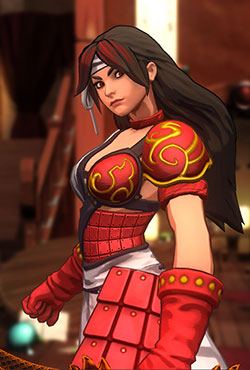
This early access title forgoes the quarter-turn hadoukens and tag team mechanics of larger titles and focuses on teaching the basics. According to Fantasy Strike’s crowdfunding page on fig.com, David Sirlin’s goals for Fantasy Strike were to make it easy to understand, easy to control, quick to learn, and still deep enough to attract fighting game veterans. The game is designed against button mashing, and focuses on timing, zoning, and defensive measures, all skills of which the long time players have mastered but newer players may overlook.
With ten characters to choose from, each represents various fighting game tropes, such as the female ninja or the aged martial artist. In addition there are a few new creative takes on the commonly reused fare, such as a magical painter who fights with a paintbrush and rainbows, and a classy-looking watchmaker that commands time and creates teleporting clock gears.
Every character is split among four types that are fighting game staples, such as the Zoner, Rush, Grappler, and the outlier of all three known as the Wild Card. Matches are played on six different stages spanning from oriental backdrops to medieval castles, with little in the means of flavor. However, due to the all too familiar visual style of its genre’s forebears, you feel as if you’re playing a tech demo of the next Street Fighter and not a newer intellectual property.
Simplified movesets
Each Fantasy Strike fighter shares the same moveset with varying results. Everyone has a singular strike, ranged attack, grapple, and special move button whose effect changes depending on if your character was airborne or not. For example, the Aladdin-esque samurai, Grave, when on the ground creates a small tornado as his ranged attack. However while in the air, the same button produces a stage-wide gust of wind that pushes the enemy back. This adds a layer of strategy to each fight, where instead of pounding buttons and trying to overwhelm the opponent to the point where they can no longer react, you can pick and choose how you want to react and counter each move, again showing the player the value of fundamentals over smashing buttons and combos. In matches I found myself playing with how to corner my opponent as best I could, something as a casual player of fighting games I never attempted. Fantasy Strike also removed any ability to dash for every one of it’s characters except for one (which is a part of her ranged attack). That makes the game a fighter that teaches you to read your opponent and react accordingly, a talent that all serious tournament players have down to an exact science.
Fantasy Strike itself consists of four modes. Arcade mode is your typical six-stage gauntlet and each stage is made up of six rounds, with the best of four being the winner. Each round takes about a minute, with each stage taking about five minutes to complete, which is rather fast-paced in comparison to some other arcade modes belonging to other titles.
Besides arcade, the game also sports a local play for those of us that still host gaming nights with friends, as well as online multiplayer. The online multiplayer impressed me greatly, for I went into this early access title thinking that it would be plagued with lag. While it did take me up to ten minutes to fight a match (not uncommon for a yet-to-be released game), I found absolutely zero lag, with each match running extremely fluid.
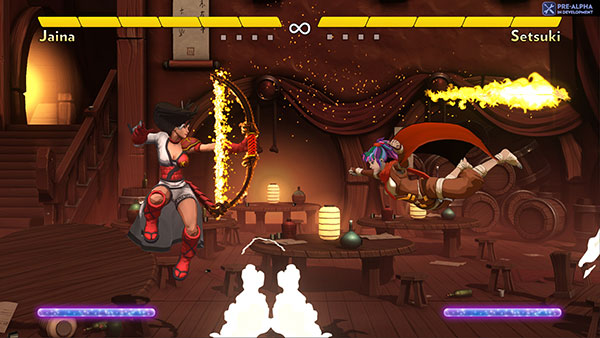
Balance issues
One of the glaring problems that Fantasy Strike has is the blatant balance issues among the character selection, particularly characters Midori and Setsuki. The former’s special attack transforms him into a giant dragon, which hits harder than his normal form. It’s range is practically three fourths of the stage for his basic strikes, and lasts between rounds. The latter, Setsuki the ninja, is the only character on the roster with a dash attack that also makes her invincible for a few frames. This makes it extremely difficult to react to due to the limited move set of the other characters. In addition, characters such as Jaina the archer being able to endlessly spam projectiles with just one button press can make fights a little lackluster in the worst way.
During my fifteen games online, most if not all players I fought against choose either Midori and Setsuki. While I did manage to come out victorious in some matches, I found myself frustrated in just the way that Fantasy Strike and Sirlin Games sought to avoid. That said, I can forgive the balance issues due to it being an early access game, and hope they take the steps to improve it with future updates.
Fantasy Strike is a welcome addition to those like myself who love the genre, but don’t know where to start training themselves to become better. However, Sirlin Games needs to find the perfect balance between beginner-friendly and tournament-ready, but only time and regular performance updates will tell if it can. Fantasy Strike is currently on Steam early-access for the PC, and slated for PS4 later in 2018. If you wish to support Fantasy Strike, visit its Patreon page.
[divider]

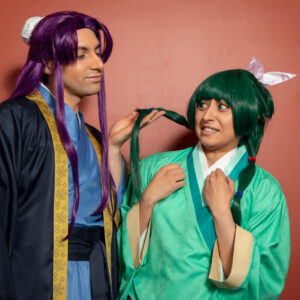
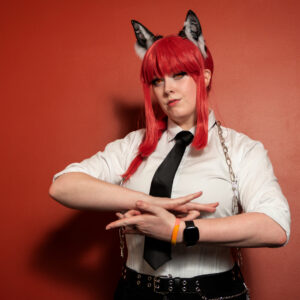
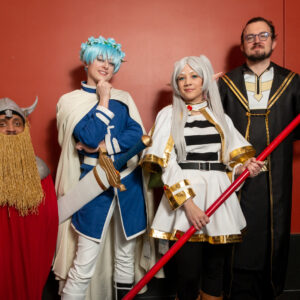
I think the issue you were having with Midori and Setsuki is that you didn’t really take a few minutes to play them. I thought they were a bit too good at first, but then once I spent 10 minutes learning what they do and how they work, I never had that problem again.
This game is actually fairly well balanced with most characters having strong matchups and weak matchups.